Is generative AI replacing human creativity?
Written by Enya Reinecken | 14th June 2023
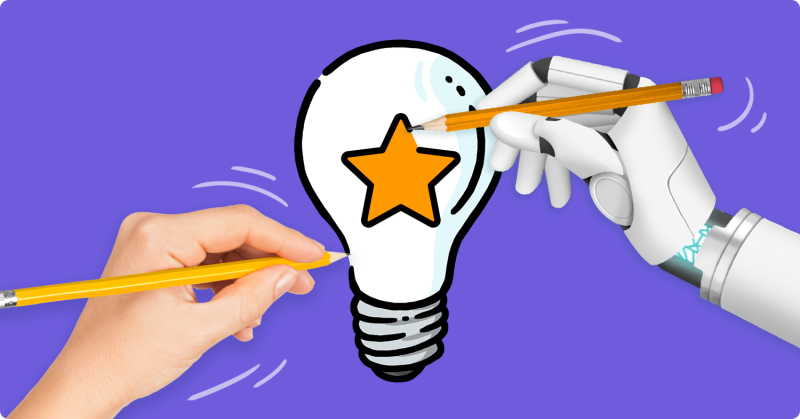
The entry of Artificial Intelligence into the mainstream conversation is difficult to pinpoint, but the introduction of OpenAI’s advanced language model, ChatGPT, last November definitely sparked widespread discourse and curiosity.
We are now able to generate diverse forms of content at the click of a button, such as complex text, music, images, and more. This creates exciting opportunities for artists and content creators, but as generative AI continues to evolve, questions arise regarding its limitations and the role it plays in relation to human creativity.
This article explores the potential of generative AI as a creative tool, the importance of human creativity, and the dynamics between the two in shaping the future of work.
We are now able to generate diverse forms of content at the click of a button, such as complex text, music, images, and more. This creates exciting opportunities for artists and content creators, but as generative AI continues to evolve, questions arise regarding its limitations and the role it plays in relation to human creativity.
This article explores the potential of generative AI as a creative tool, the importance of human creativity, and the dynamics between the two in shaping the future of work.
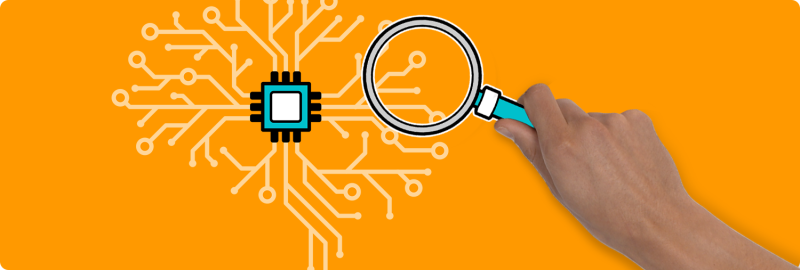
Understanding generative AI
The main focus of generative AI, as the name suggests, is generating content.
From writing books to composing music or creating unique images and even videos. Its capabilities seem limitless.
But how does it generate all this content? Generative AI utilizes machine learning algorithms and training models with complex datasets. It is able to identify and extract patterns and structures from these datasets and can use this information to generate new content that aligns with the characteristics and patterns it observed previously.
Let’s look at an example: If we ask ChatGPT to write a poem about the human brain, it will generate a unique text based on its training data, such as publicly available texts from books, articles, websites, or other online content. Since ChatGPT is able to identify logical patterns and text structures, it can use this information to create a text that makes sense to us readers.
But how does it generate all this content? Generative AI utilizes machine learning algorithms and training models with complex datasets. It is able to identify and extract patterns and structures from these datasets and can use this information to generate new content that aligns with the characteristics and patterns it observed previously.
Let’s look at an example: If we ask ChatGPT to write a poem about the human brain, it will generate a unique text based on its training data, such as publicly available texts from books, articles, websites, or other online content. Since ChatGPT is able to identify logical patterns and text structures, it can use this information to create a text that makes sense to us readers.
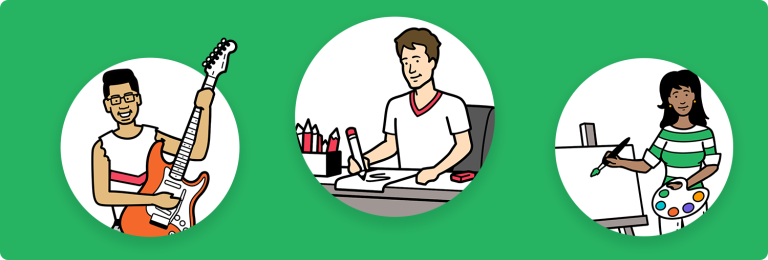
Exploring human creativity
On the other side of the story, we have human creativity. Our brain has the distinct ability to
to generate or recognize new ideas or possibilities that aid us in solving a problem, facilitating communication or that are simply entertaining.
Going into the neuroscience behind human creativity would probably fill multiple books. To simplify, we can say that our imagination and creativity are closely related to our emotions and subjective experiences.
It is our cultural, social, and individual background that shapes our view of the world and fuels passion and inspiration. Each one of us brings unique perspectives and insights into the creative process, making it a deeply personal and meaningful expression of our identity and worldview.
Many, if not all, of the greatest pieces of art, literature, and music were shaped by the authentic experiences and emotions of their creators.
Going into the neuroscience behind human creativity would probably fill multiple books. To simplify, we can say that our imagination and creativity are closely related to our emotions and subjective experiences.
It is our cultural, social, and individual background that shapes our view of the world and fuels passion and inspiration. Each one of us brings unique perspectives and insights into the creative process, making it a deeply personal and meaningful expression of our identity and worldview.
Many, if not all, of the greatest pieces of art, literature, and music were shaped by the authentic experiences and emotions of their creators.

The limitations of generative AI
This is exactly where generative AI lacks. It doesn’t have subjective experiences and emotions and cannot draw upon personal perspectives and emotional nuances when creating content.
Generative AI can emulate artists and creators, but it cannot replace them because it lacks the depth and authenticity that human-made creation has. Artificial Intelligence is, by definition, artificial. It is a simulation of human intelligence that thrives on using content that was generated by humans in the first place.
A further restriction that generative AI is currently facing is its limited data resources. ChatGPT, for instance, only has access to data available up until September 2021 and cannot extract information from any gated or subscription-based content or other restricted sources.
This lack of data and authenticity means that it cannot create truly original and thought-provoking content in the same way humans can.
Generative AI can emulate artists and creators, but it cannot replace them because it lacks the depth and authenticity that human-made creation has. Artificial Intelligence is, by definition, artificial. It is a simulation of human intelligence that thrives on using content that was generated by humans in the first place.
A further restriction that generative AI is currently facing is its limited data resources. ChatGPT, for instance, only has access to data available up until September 2021 and cannot extract information from any gated or subscription-based content or other restricted sources.
This lack of data and authenticity means that it cannot create truly original and thought-provoking content in the same way humans can.
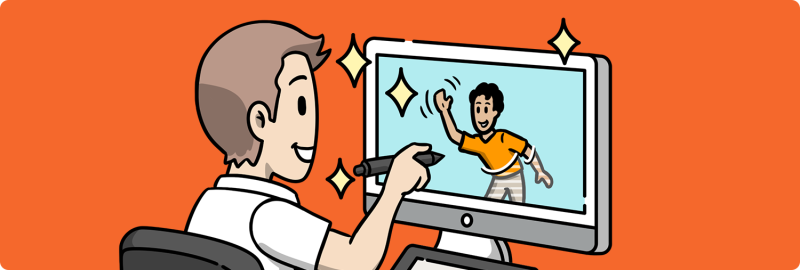
Generative AI can enhance our creativity
While generative AI cannot replace human creativity, it is a powerful tool that can enhance the creative process by bringing new dimensions and possibilities to artistic endeavors.
It allows us to automate certain strenuous tasks, which can free up more time in our schedules to be creative.
Generative AI is also very effective for idea generation and offers us new perspectives, as it lacks the inhibitions that humans face throughout the creative process, such as boredom or shame. Rather than replacing, it can enhance and inspire human creativity, opening up new paths for self-expression and exploration.
Generative AI is also very effective for idea generation and offers us new perspectives, as it lacks the inhibitions that humans face throughout the creative process, such as boredom or shame. Rather than replacing, it can enhance and inspire human creativity, opening up new paths for self-expression and exploration.
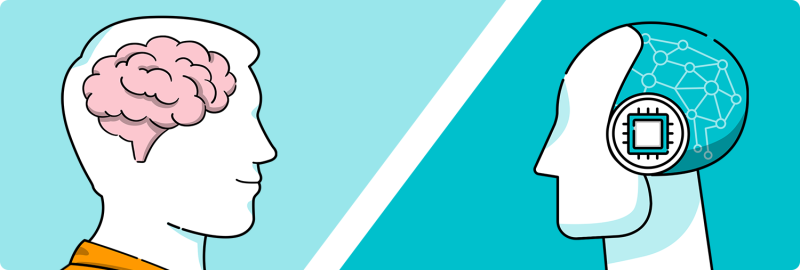
Will generative AI replace us?
Generative AI models are likely to continue shaping sectoral shifts in employment, according to the latest “Future of Work” Report by the WEF. While this and many other sources talk about substantial projected job losses – Research by Goldman Sachs is suggesting the exposure of the equivalent of 300 million full-time jobs to automation – there is also a general consensus that AI will lead to the generation of new jobs, minimizing net loss of jobs.
When looking at history, we can see that big technological developments have always led to a surge in job losses, but usually also to a rise in new work opportunities. The invention of the internal-combustion engine, for instance, greatly affected the personal transport industry. However, the resulting rise in productivity led to a high demand for workers in the automotive industries, creating many new jobs.
And there are many more examples like this. In fact, 60% of today’s workers are employed in occupations that didn’t even exist 80 years ago. Concerning work in creative industries, generative AI might replace many entry-level jobs that typically include repetitive tasks, which can now easily be automated. This can be a problem as it is those entry-level jobs that help aspiring and upcoming creatives to get a foot in the door of their respective industries. With a higher barrier to entry and no need for outsourcing mundane tasks, jobs will be lost while the competition between creatives increases. It will be essential for professionals to stay ahead of the curve and utilize AI in the most effective way possible.
This development, however, can also create new opportunities for us to create more and better content by leveraging AI tools throughout the process.
When looking at history, we can see that big technological developments have always led to a surge in job losses, but usually also to a rise in new work opportunities. The invention of the internal-combustion engine, for instance, greatly affected the personal transport industry. However, the resulting rise in productivity led to a high demand for workers in the automotive industries, creating many new jobs.
And there are many more examples like this. In fact, 60% of today’s workers are employed in occupations that didn’t even exist 80 years ago. Concerning work in creative industries, generative AI might replace many entry-level jobs that typically include repetitive tasks, which can now easily be automated. This can be a problem as it is those entry-level jobs that help aspiring and upcoming creatives to get a foot in the door of their respective industries. With a higher barrier to entry and no need for outsourcing mundane tasks, jobs will be lost while the competition between creatives increases. It will be essential for professionals to stay ahead of the curve and utilize AI in the most effective way possible.
This development, however, can also create new opportunities for us to create more and better content by leveraging AI tools throughout the process.
Conclusion
Despite the capabilities of generative AI, human creativity remains invaluable as it embodies our individuality and reflects personal experiences in a cultural context. Generative AI will continue to evolve and offer even more new and exciting possibilities to create and inspire. As with any major development in the past, it will lead to the loss of jobs but also generate new opportunities. The automation of tasks through the help of AI will enable us to optimize efficiency and free up resources for creative thinking. Generative AI has the potential to become an integral collaborator supporting the human creative process and leading to improved outputs while remaining authentic.
simpleshow’s extensive experience with AI and our long experience of using AI at simpleshow confirms is proof that effective collaboration between technology and human creativity is not just possible, it is the key to unlocking unparalleled innovation and creating limitless possibilities in content creation and communication.
simpleshow also understands the importance of user security and privacy. The platform incorporates robust security features to protect user data and ensure a safe environment.
We’ve applied these practices to simpleshow’s AI powered script writer, the Story Generator. The Story Generator is a custom-built, powerful technology stack that uses text-generative AI, enriched with security and storytelling features to create perfectly tailored explainer video scripts in an instant.
simpleshow also understands the importance of user security and privacy. The platform incorporates robust security features to protect user data and ensure a safe environment.
We’ve applied these practices to simpleshow’s AI powered script writer, the Story Generator. The Story Generator is a custom-built, powerful technology stack that uses text-generative AI, enriched with security and storytelling features to create perfectly tailored explainer video scripts in an instant.
Sources
- https://openai.com/blog/chatgpt
- https://www.mckinsey.com/featured-insights/mckinsey-explainers/what-is-generative-ai
- https://www.weforum.org/reports/the-future-of-jobs-report-2023/
- https://www.goldmansachs.com/intelligence/pages/generative-ai-could-raise-global-gdp-by-7-percent.html?ref=thestack.technology?ref=thestack.technology
- https://www.unimelb.edu.au/professional-development/insights/technology/new-jobs-created
- https://www.techtarget.com/searchenterpriseai/definition/AI-Artificial-Intelligence
- https://www.ft.com/content/dbaa3335-7d9c-4c0a-8092-0751c3fab6e4
See related articles

Blog
